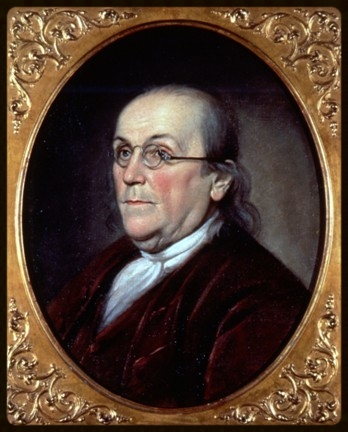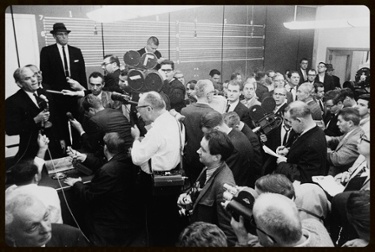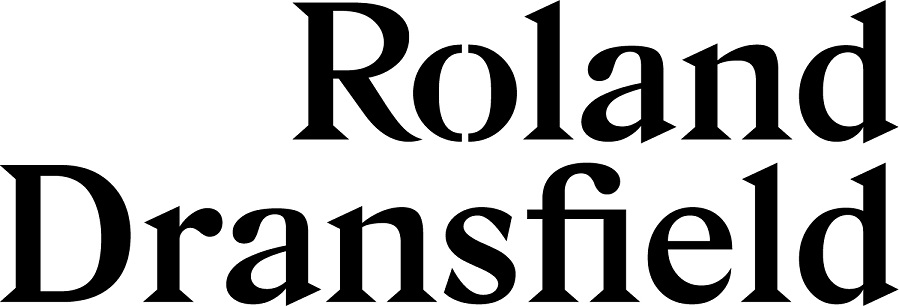What is media relations? And can earned coverage be more effective than ads?
Organisations' relationships with the media can be a somewhat contentious issue and PR agencies are often blamed for facilitating this skewed association.
For those of us in the industry, however, this everyday practice is far less controversial. And in this guide, we'll get to the bottom of what media relations is and how it works on a day-to-day basis.
A Brief History of Media Relations
Defining 'media relations' can be difficult. A relationship between private or public sector organisations and the media has existed since the first newspapers were created, however, the first consolidated effort by a private individual to use the media as a tool to sway public opinion can arguably be credited to Benjamin Franklin.
During the 18th century, this US founding father made prolific use of the printing press to produce pioneering pamphlets to further his political causes. But it's probably the granddaddy of PR – Edward Bernays – and his innovative use of press releases as a form of publicity who first began cultivating media relations into the discipline we know today.
However it's characterised, media relations is a key – if not definitive – aspect of public relations. Indeed, the two are pretty much inseparable. To paraphrase Sun Tzu – PR refers to the overall strategy behind communication with a client's audience, while media relations is one of the most important tactics used to achieve this end.
The way media relations works in practice can take a variety of forms, but it's no exaggeration to say agencies are hired and fired on the strength (or lack) of their relationships with a clients' target publications.
Why use media relations?
No matter what sector, industry or area you work in – for every type of business, there's a corresponding news outlet. The way a company seeks to utilise an agency or its in-house PR team's media relations expertise is largely dependent on what it's trying to get out of the exercise.
For instance, if there's a focus on broadening the company's profile in key areas – there might be a drive to develop opportunities to contribute to upcoming features, provide commentary on relevant issues or participate in events that'll highlight the company's position as an industry leader and expert within its chosen field.
While PR is ostensibly confined to organically generating third-party coverage – the lines between it and marketing can sometimes be blurred and these days, many agencies tend to provide the full spectrum of commercial support.
This is particularly applicable when companies are seeking paid sponsorship opportunities, paid editorial contributions or straightforward advertising to back up their PR activities.
So if that's the case – you may be asking 'why not simply focus on purely paid channels?' Well, the rationale behind PR and earned media is that the 'editorial kudos' you gain from a supposedly impartial, third-party commendation (such as having a positive story about your brand or business covered) is more valuable than simply shouting the message you want to get across via advertising.
In the past, one of the key metrics we in the industry have used in determining the success of a PR campaign is how much the value of the coverage we've managed to achieve for a company would've cost in terms of paid advertising (known as 'equivalent advertising value' or 'EAV').
As you can imagine, this doesn't always present a balanced picture and as such, EAV has fallen out of favour, particularly as organisations have started paying much more attention to online coverage – where the same real estate constraints don't apply.
How does media relations work?
Commentators often claim that the PR industry and journalists have become too close and this increasingly symbiotic relationship has all but killed off good old-fashioned investigative journalism.
Whether you agree or not, it's evident that these two parties do enjoy a reciprocal relationship, but it's not as clear-cut as you might think.
Newspapers, online and hybrid publications are – for the most part – private organisations with a remit to increase readership and enhance their own value to prospective advertisers. As agents of these organisations, journalists seek to cover the most compelling stories to attract a greater share of their target audience.
We can't ignore the fact that the recession also hit the media hard and nowadays, many publications are forced to more with less. Fortunately, the dawn of online press release depositories and the growing media savvy of private organisations means journalists have more potential stories at their fingertips than ever before.
Knowing this, PR agencies have to promote their clients' stories to the right people at the right time. And being adept at this practice is invaluable. After all, there's a limited amount of space to compete for and a pretty much never-ending stream of press releases flooding journalists' inboxes on a daily basis.
By getting to know the character of publications and developing a feel for what specific journalists at various titles are looking to cover – PRs and reporters can develop fruitful long-term relationships that benefit both parties.
This extends from relatively simple knowledge, like what upcoming features a publication will be dealing with and when the deadline for contributions to supplements will be, to fairly intimate operations, whereby a preferred publication is granted an exclusive on a certain story or is actively approached to provide commentary on a relevant issue.
Ever-faster news cycles means there's a great need for fresh content and providing publications with informed comment and advice for the readers establishes a mutually beneficial relationship between organisations and the media.
Bedfellows
After working with a publication or specific journalist for a long period, closer relationships inevitably develop, but for the most part this doesn't extend to Max Clifford-style media manipulation. For instance, in a pinch, a reporter might call upon a PR they know has the right type of clients to provide some last-minute contributions.
On the other hand, a friendly journalist might be able to squeeze in a couple of lines on a less-than-interesting client story for a PR that they work closely with on occasion. Similarly, by merit of sheer exposure – certain agencies may be at the forefront of a journalist's mind when it comes time to research a story.
One perennial consideration is the newsworthiness of stories. Often, an event or milestone a client considers important, won't matter as much to their target publication's audience and by extension – the journalists working there.
When these cases arise, it's crucial for PRs not to abuse their privileged position with journalists. Bombarding them with irrelevant stories or staid press releases that won't get much traction can be a real turn-off and it's vital to manage client-end expectations or vet potential stories before they're developed into press releases.
Dawn of Digital
The rise of online publications has come hand-in-hand with faster internet connections and the wide proliferation of mobile computing devices – fundamentally altering the way we consume and interact with the media.
As such, the PR skillset has been forced to evolve to ensure agencies can target their clients' key audiences on both off and online channels. While the basics of the discipline remain the same – digital publications typically operate on a much faster cycle than their analog counterparts.
The rate that stories are published therefore tends to be much higher for these outlets – meaning they're always hungry for more content. There's also no physical constraints on space – which means the length of articles is determined solely at the discretion of the publication itself.
Getting client-end contributions from the inception stage, through the sometimes-onerous approval process and out to the media in a timely manner has been a perennial struggle for PRs and is only exacerbated by the fast pace of digital publications.
Beyond pure PR, achieving high-profile digital coverage for a client can make for a great source of relevant inbound links in many cases, bolstering the ranking potential of client websites.
However, while the PR skillset has translated well into the field, the growth of online has proved something of a double-edged sword for the industry. Historically, we had plenty on our plate merely monitoring media chatter about our clients, but to encompass the full media spectrum in the 21st century, it's necessary to pay close attention 24/7 to social channels for the reaction to stories.
Agencies have quickly identified a need to adapt to the online exodus, however, and those with the will and resources necessary to introduce new disciplines into their skill set have turned a potential crisis into a lucrative opportunity.
And You?
If you've got any questions on media relations, or simply want to share your thoughts on how the media has changed – for better or worse – be sure to leave us a comment below or give us a shout on Twitter.
And if you're looking for more tips on gaining coverage for your company news, look no further. We asked six property journalists, including Place North West's very own Paul Unger, about their pet PR peeves and the best way to sell-in stories. Simply hit the button below to find out what advice they had to give:
Selected industry experts bring you insight and expert advice, across a range of sectors.
Subscribe for free to receive our fortnightly round-up of property tips and expertise
Selected industry experts bring you insight and expert advice, across a range of sectors.
Subscribe for free to receive our fortnightly round-up of property tips and expertise




